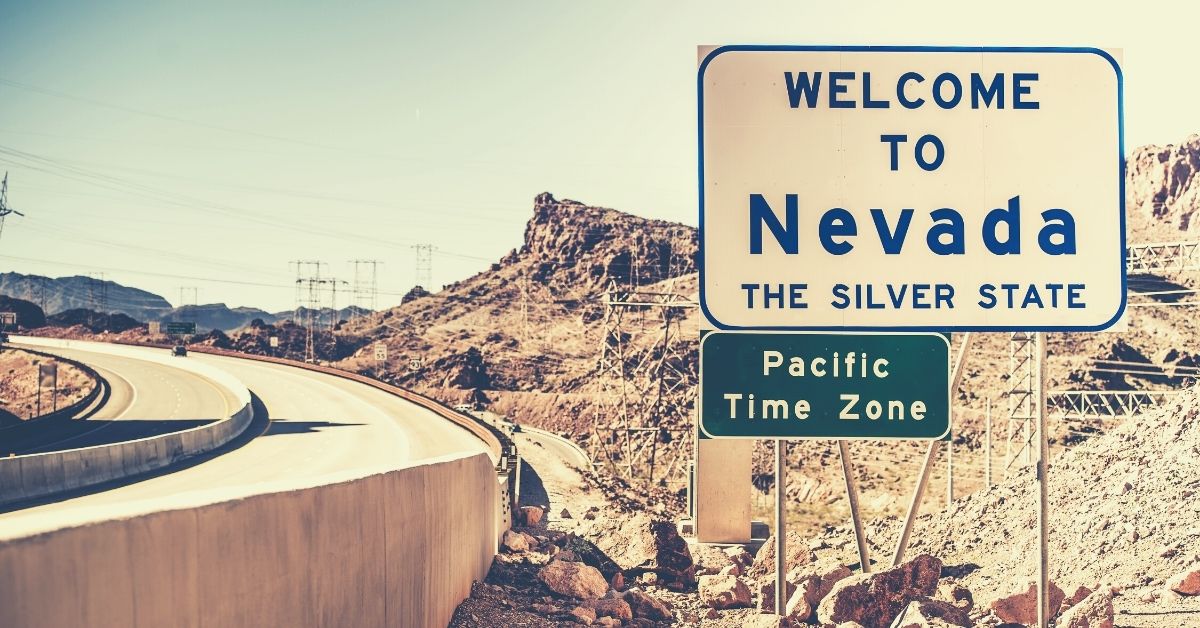Nevada Destinations: From the dazzling lights of Las Vegas to the serene beauty of its vast natural landscapes, Nevada offers a captivating blend of urban excitement and untouched wilderness. This diverse state boasts iconic landmarks, hidden gems, and a rich history waiting to be explored, promising an unforgettable adventure for every traveler.
This guide delves into the multifaceted offerings of Nevada, showcasing its natural wonders, vibrant cities, historical significance, and unique experiences. Whether you seek thrilling outdoor adventures, cultural immersion, or simply a luxurious getaway, Nevada caters to a wide range of interests and preferences, ensuring a memorable journey.
Natural Wonders of Nevada
Nevada’s diverse landscape, shaped by millennia of geological activity, boasts a stunning array of natural wonders. From dramatic canyons carved by ancient rivers to soaring mountain ranges and expansive deserts, the state offers a unique and breathtaking experience for outdoor enthusiasts and nature lovers alike. Its state and national parks showcase a remarkable variety of ecosystems, geological formations, and recreational opportunities.
Unique Geological Formations in Nevada’s State Parks
Nevada’s state parks showcase a fascinating array of geological formations reflecting the state’s complex geological history. Valley of Fire State Park, for example, is renowned for its vibrant red sandstone formations, sculpted by wind and water erosion over millions of years. These formations, including towering monoliths and intricate canyons, create a visually striking landscape. Cathedral Gorge State Park features unique slot canyons, formed by water erosion through soft volcanic ash, creating narrow passageways with sculpted walls. These canyons offer a dramatic and intimate experience for hikers. Other parks exhibit diverse formations, such as the petrified wood found in certain areas, demonstrating past volcanic activity and fossilization processes.
Diverse Ecosystems in Nevada’s National Parks: Flora and Fauna
Nevada’s national parks, including Great Basin National Park and Death Valley National Park (partially in Nevada), exhibit a remarkable diversity of ecosystems, despite the state’s arid climate. Great Basin National Park, situated in the eastern part of the state, showcases high-elevation ecosystems with coniferous forests, alpine meadows, and unique Bristlecone Pine groves, some of the oldest living organisms on Earth. These forests support a variety of wildlife, including mule deer, pika, and various bird species adapted to high-altitude environments. Death Valley, in contrast, displays desert ecosystems with unique adaptations to extreme heat and aridity. Here, one can find hardy desert plants like creosote bushes and Joshua trees, alongside desert animals such as desert tortoises, coyotes, and various reptile species. The varied elevations and microclimates within these parks contribute to their remarkable biodiversity.
Hiking Trails and Outdoor Activities in Nevada’s Natural Areas
Nevada offers a wide range of hiking trails and outdoor activities to suit various skill levels and preferences. From easy, accessible nature walks to challenging backcountry treks, there’s something for everyone. Valley of Fire State Park offers trails ranging from short, paved paths suitable for families to more strenuous hikes through canyons and up to scenic overlooks. Great Basin National Park provides trails leading to alpine lakes, ancient bristlecone pine forests, and stunning mountain vistas, with difficulty levels ranging from moderate to strenuous. These trails often require good physical condition and appropriate gear. Death Valley National Park, while presenting extreme temperatures, offers unique opportunities for exploring canyons, salt flats, and sand dunes, with trails varying in length and difficulty. Accessibility varies across different parks and trails; it’s crucial to check trail descriptions and park information for details before planning a visit.
Comparison of Nevada State Parks
| State Park | Size (Approximate) | Key Activities | Accessibility |
|---|---|---|---|
| Valley of Fire State Park | 46,000 acres | Hiking, rock climbing, photography, scenic drives | Mostly accessible, some trails strenuous |
| Cathedral Gorge State Park | 3,000 acres | Hiking, exploring slot canyons, photography | Moderate accessibility, some trails narrow and uneven |
| Lake Mead National Recreation Area (partially in Nevada) | 1.5 million acres | Boating, fishing, hiking, camping, water sports | Varied accessibility, depending on specific location and activity |
Exploring Nevada’s History and Culture
Nevada’s rich history and diverse cultural tapestry extend far beyond its glittering casinos and dramatic landscapes. From the enduring legacy of its Native American inhabitants to the boom-and-bust cycles that shaped its towns and cities, the state offers a captivating journey through time. This exploration delves into Nevada’s past, examining its ghost towns, the contributions of its indigenous populations, the contrasting development of two key cities, and showcasing some of its significant museums.
Nevada’s Ghost Towns: Echoes of the Past
Many of Nevada’s abandoned settlements, or ghost towns, serve as poignant reminders of the state’s tumultuous past, particularly the silver and gold rushes of the 19th century. These towns, once bustling hubs of activity, now stand as silent witnesses to the fortunes and misfortunes that defined the era. Rhyolite, for instance, experienced a meteoric rise and fall, its boom fueled by the discovery of gold and its bust precipitated by the depletion of the mines and the economic downturn. Today, its crumbling buildings, eerily preserved in the desert landscape, offer a glimpse into a bygone era of rapid growth and equally swift decline. Similarly, Virginia City, while not entirely deserted, retains much of its historical character, its saloons and brothels hinting at the wild west atmosphere that once permeated the town. The preservation efforts in these towns allow visitors to understand the ephemeral nature of mining booms and the enduring impact they had on the state’s development.
Cultural Contributions of Nevada’s Native American Tribes
Nevada is home to numerous Native American tribes, each with a unique history, culture, and heritage. For millennia, these tribes—including the Washoe, Paiute, and Shoshone—thrived in the diverse environments of the state, developing sophisticated systems of resource management and social organization. Their traditional knowledge of the land, their artistic expressions, and their oral traditions have profoundly shaped Nevada’s cultural landscape. The Washoe, for example, are known for their intricate basket weaving, a skill passed down through generations, reflecting both artistic talent and a deep understanding of the natural world. The Paiute and Shoshone, adapted to the harsh desert conditions, developed resilient survival strategies and maintained rich oral histories that chronicle their connection to the land and their ancestors. Preserving and celebrating these cultures is vital to understanding Nevada’s complete history.
Comparing the Historical Development of Las Vegas and Reno
Las Vegas and Reno, Nevada’s two largest cities, offer a fascinating case study in contrasting urban development. Las Vegas, initially a small desert settlement, experienced explosive growth following World War II, fueled by the burgeoning tourism industry and the legalization of gambling. Its development has been characterized by rapid expansion, architectural innovation, and a focus on entertainment and leisure. Reno, on the other hand, benefited from its location along the transcontinental railroad and developed a more diversified economy, incorporating industries such as mining, agriculture, and later, technology. While both cities experienced periods of rapid growth, their trajectories, driven by different economic engines, resulted in distinct urban landscapes and cultural identities. The contrast between the planned, sprawling expanse of Las Vegas and the more organically developed, historically layered streetscape of Reno highlights the diverse forces that shaped Nevada’s urban evolution.
Nevada Museums: A Categorized List
Nevada boasts a diverse array of museums, each offering a unique perspective on the state’s history, culture, and natural wonders. The following table categorizes several notable museums:
| Art Museums | History Museums | Science Museums |
|---|---|---|
| Nevada Museum of Art (Reno) | Nevada State Museum (Carson City) | National Atomic Testing Museum (Las Vegas) |
| The Marjorie Barrick Museum of Art (Las Vegas) | Virginia City Museum (Virginia City) | (Add another science museum here if available) |
| (Add another art museum here if available) | (Add another history museum here if available) | (Add another science museum here if available) |
Unique Nevada Experiences
Nevada’s appeal extends far beyond its natural beauty and historical significance. The state boasts a collection of unique experiences that draw visitors from around the globe, creating a vibrant and eclectic cultural landscape. These experiences range from the internationally renowned Burning Man festival to the enigmatic allure of Area 51, showcasing Nevada’s capacity for both radical self-expression and enduring mystery.
The Burning Man Festival and its Cultural Impact
Burning Man, held annually in the Black Rock Desert, is more than just a festival; it’s a temporary city dedicated to radical self-expression, community, and art. Participants, known as “Burners,” create and participate in a unique social experiment characterized by radical inclusion, gifting, and leaving no trace. The festival’s impact extends beyond the playa; its principles of community, creativity, and civic engagement inspire projects and initiatives worldwide. The event’s artistic installations, often large-scale and ephemeral, are renowned for their imaginative designs and thought-provoking themes. The temporary nature of the city and its commitment to environmental responsibility further contribute to its unique cultural significance.
Area 51 and its Associated Myths and Legends
Area 51, a highly classified United States Air Force facility located within the Nevada Test and Training Range, has become synonymous with extraterrestrial life and government conspiracies. While the Air Force has acknowledged the base’s existence, its specific activities remain shrouded in secrecy, fueling speculation and countless theories about UFOs and advanced technology. This secrecy, combined with the remote and desolate landscape surrounding the base, has captivated the imagination of countless individuals, leading to numerous books, films, and documentaries exploring the possibilities. The annual “Alienstock” event, though ultimately less successful than anticipated, demonstrates the ongoing fascination with Area 51 and its mysterious reputation.
Nevada’s Diverse Festivals and Events
Beyond Burning Man, Nevada hosts a wide array of festivals and events throughout the year, reflecting the state’s diverse population and interests. These range from music festivals celebrating various genres to rodeos showcasing Nevada’s western heritage, art festivals celebrating local talent, and cultural celebrations honoring different ethnicities. The events calendar varies widely across the state, with Las Vegas hosting large-scale productions, while smaller towns and cities organize community-focused celebrations. These events contribute significantly to Nevada’s tourism economy and provide opportunities for residents and visitors alike to engage with the state’s rich cultural tapestry.
Lesser-Known Nevada Attractions
Nevada offers many hidden gems beyond the well-trodden tourist paths. These lesser-known attractions provide a unique perspective on the state’s diverse landscapes and history.
- Valley of Fire State Park’s Fire Wave: A vibrant sandstone formation showcasing striking red and orange hues, offering a unique photographic opportunity and a captivating hike through ancient landscapes.
- Rhyolite Ghost Town: A preserved ghost town near Death Valley, showcasing the boom-and-bust cycle of Nevada’s mining history. The remaining structures offer a glimpse into the lives of early settlers and the remnants of a once-thriving community.
- Great Basin National Park’s Lehman Caves: Explore stunning cave formations with delicate formations and fascinating geological history. The guided tours provide an in-depth look at the cave’s unique ecosystem and the processes that shaped it.
- Tonopah’s Mizpah Hotel: A historic hotel with a reputation for paranormal activity, attracting ghost hunters and those intrigued by the unexplained. Its ornate architecture and intriguing history create a unique and atmospheric experience.
- Nevada State Railroad Museum: Explore the history of railroading in Nevada, featuring a collection of locomotives, passenger cars, and other rolling stock. The museum offers a fascinating look at the role railroads played in shaping the state’s development.
Outcome Summary
Nevada’s allure lies in its remarkable contrast: the shimmering casinos of Las Vegas juxtaposed against the stark beauty of its deserts and mountains. From exploring ancient ghost towns to witnessing breathtaking starlit skies, a Nevada vacation offers a unique tapestry of experiences. Whether you choose to immerse yourself in the vibrant energy of the city or seek solace in the quiet grandeur of nature, the Silver State promises an adventure tailored to your desires.




